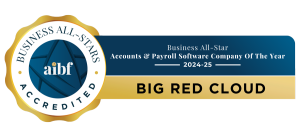Keeping your accounts isn’t just to keep the taxman happy and off your back. They are a critical part of understanding, evaluating and developing your business. Your accounts can speak volumes, warning you of impending danger, celebrating financial success or raising questions about how resources are spent.
Of course to hear them speak you have to know their language. This can be a problem for people with small businesses and sole traders just getting started. There is usually so much going on you never feel like you have time to sit down and get to grips with profit / loss and balance sheets.
The sooner a business familiarises itself with its accounts and keeps track of them the better off that business will be in the long term. Accounting software will keep your financial records in a clear, organised fashion. Being able to read the terms at a glance means reviewing accounts becomes a simple, straightforward process.
The Fundamental Terms you will come across in a Profit & Loss Sheet are:
Gross Income
– This is the total of all money that a business brings in through sales to customers, sometimes called Turnover.
Net Income
– This is gross income less any discounts or allowances such as from early payment or bulk purchases
Gross Profit
– This figure is arrived at after subtracting the cost of sales such as production, unit cost, delivery from net Income
Operating Profit
– Overheads or fixed costs include expenses such as wages, rent, utilities and marketing. Subtracting these costs from Gross Profit gives the Operating Profit
Profit before Tax
– Adding or subtracting additional income or expenses to the Operating Profit gives Profit before Tax. These will include irregular purchases or sales such as of machinery or equipment.
Net Profit
– This is the final figure arrived at by subtracting taxes from Profit before Tax
While a Profit and Loss sheet will outline your business’s status over a given period of time such as a month or a year the balance Sheet describes the status of your business at a specific point in time. A balance Sheet might be titled, Balance of Company X as of Jan 1st 2010.
A balance sheet is split up into two separate sections, assets and liabilities, each of which must balance out the other. The Standard Categories listed in a balance Sheet are:
Assets
Fixed Assets
– This is the value of all items owned by the business such as buildings, vehicles and equipment that are not intended for sale.
Depreciation
– The loss in value of fixed assets.
Total Fixed Assets
– The value of fixed assets minus depreciation.
Current Assets
– This generally covers any assets such as cash or stocks that can be quickly and easily accessed.
Total Assets
– Total fixed assets plus current assets
Liabilities
Current Liabilities
– Any outstanding loans or monies owed that need to be repaid within the year.
Proprietor’s Interest
– Capital invested by the business’s owner
Net Profit
– Profit or Loss from the year as calculated in the Profit & Loss Sheet
Year End Capital
– The total value of liabilities
The figures for Year End Capital and Total Assets should be the same for the balance sheet to be balanced. If they are not than there is an error in your accounting.
Big Red Cloud online accounting software provides quick, simple and easy to read profit / loss and balance sheets. Information can be entered into the system easily and data can be drilled down into to find out detailed information about the health of your business.




